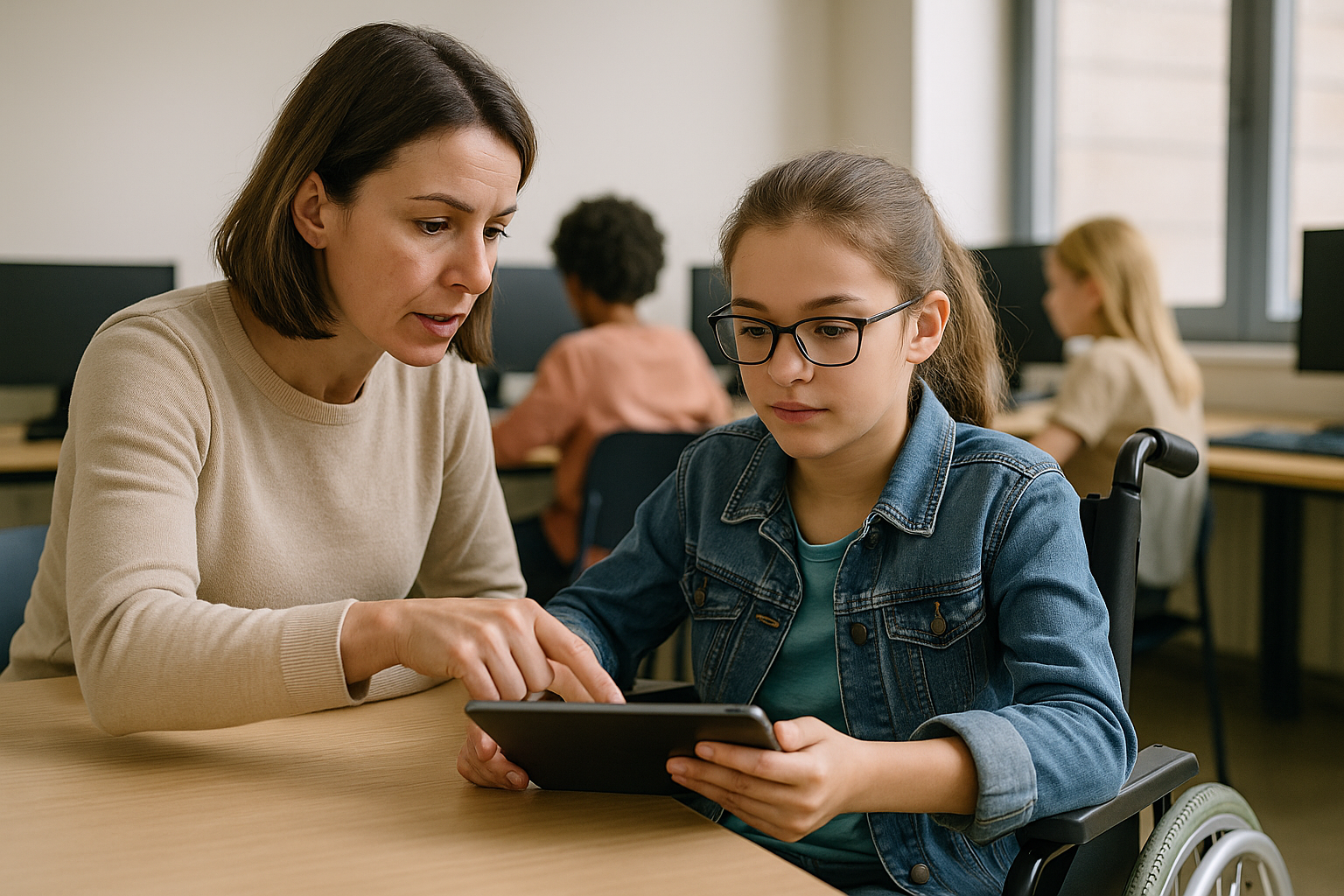Inclusive education faces digital gap as teachers lack assistive tech training
The study reveals that while digital tools are increasingly being adopted in socio-educational practices, most educators rely primarily on widely available devices and internet content rather than specialized assistive technologies. Computers, tablets, and smartphones have become common in the educational environment, and educators routinely use online platforms to locate and share content tailored for their students.

A recent study brings into sharp focus the digital readiness gap among educators working with students with disabilities. As educational institutions increasingly integrate digital resources into socio-educational interventions, the study identifies both promise and shortcomings in how these tools are being applied in real-world contexts.
Published in the journal Information, the research paper “ICT Use by Educators for Addressing Diversity” stresses the need for specialized training and institutional support to fully leverage the potential of Information and Communication Technologies (ICTs) in addressing educational diversity. The findings stem from qualitative interviews with social educators engaged in extracurricular activities for learners with disabilities.
Are educators equipped to use ICTs effectively for disability inclusion?
The study reveals that while digital tools are increasingly being adopted in socio-educational practices, most educators rely primarily on widely available devices and internet content rather than specialized assistive technologies. Computers, tablets, and smartphones have become common in the educational environment, and educators routinely use online platforms to locate and share content tailored for their students.
Despite this baseline familiarity, the researchers found that educators face critical challenges in applying ICT tools in ways that are meaningful and accessible for students with disabilities. One key issue is the lack of training in assistive technologies and adaptive digital resources specifically designed to meet the needs of diverse learners. Educators expressed a strong desire to go beyond general digital literacy and deepen their competence in tools that can support inclusion, engagement, and developmental progress.
This gap between general digital use and specialized knowledge points to a systemic weakness in teacher preparation and ongoing professional development. The study highlights the need for educators to be equipped with not only the technical skills but also the pedagogical frameworks that enable them to adapt ICT tools to different disability profiles.
What are the main barriers to ICT integration in inclusive education?
A significant portion of the research is devoted to understanding the institutional and practical obstacles educators encounter when trying to integrate ICT into inclusive teaching. Among the most pressing barriers is the scarcity of dedicated digital resources tailored to students with disabilities. While educators may have access to basic technologies, they often lack tools that are designed with accessibility features such as text-to-speech, augmented communication interfaces, or adaptive input methods.
Equally problematic is the absence of formal training programs focused on inclusive ICT use. Many educators reported having to rely on trial-and-error approaches or informal peer support networks to learn how to apply digital tools in inclusive settings. This ad hoc learning process leads to inconsistent outcomes and reinforces inequities in educational delivery for students with disabilities.
Another layer of complexity stems from the lack of institutional support and strategic planning. Educational institutions frequently fail to prioritize inclusive digital practices, leaving educators without sufficient resources, technical assistance, or time to explore and implement ICT-based interventions effectively. This disconnect between policy aspirations and operational support undermines the potential of ICT to act as a bridge to greater inclusion.
Additionally, the study notes that some educators are hesitant to embrace new technologies due to concerns about ethical implications, privacy, and the risk of depersonalizing the educational experience. These concerns are compounded by the rapid pace of technological change, which often outstrips the ability of educators and institutions to keep up.
How can policy and practice be realigned for inclusive digital education?
In response to the challenges identified, the authors propose several strategies aimed at realigning educational policy and practice to support the inclusive use of ICTs. Central to their recommendations is the development of structured, competency-based training programs focused on the use of digital tools for learners with disabilities. These programs should be embedded in teacher education curricula and offered as part of ongoing professional development.
The study also calls for a strategic policy shift that elevates inclusive digital education to a core priority within educational planning. This would involve investing in digital infrastructure, providing access to specialized software and hardware, and establishing technical support systems that empower educators to experiment and innovate.
Another recommendation is the creation of collaborative learning environments where educators can share best practices, troubleshoot challenges, and co-develop digital solutions. These communities of practice can help normalize inclusive ICT use and accelerate knowledge transfer across institutional boundaries.
Moreover, the authors emphasize the need to involve educators in the design and evaluation of ICT tools. Their frontline experience offers valuable insights into usability, relevance, and impact, which are essential for developing technologies that are genuinely inclusive. Feedback loops between developers, educators, and learners can ensure that tools are continuously improved and aligned with real-world needs.
The researchers also point to the importance of evaluative frameworks that assess not just the presence of ICTs in educational settings but also their actual contribution to inclusion. Metrics should account for how well digital tools support individualized learning, promote autonomy, and enhance social participation among students with disabilities.
With the right support, educators can harness the potential of ICT to create more accessible, engaging, and inclusive learning environments. However, without strategic action, the digital divide within education will persist, reproducing the very inequities that inclusive practices aim to eliminate.
- FIRST PUBLISHED IN:
- Devdiscourse










